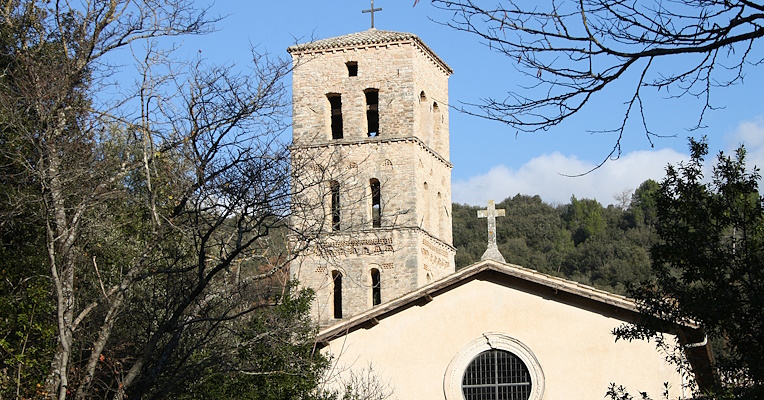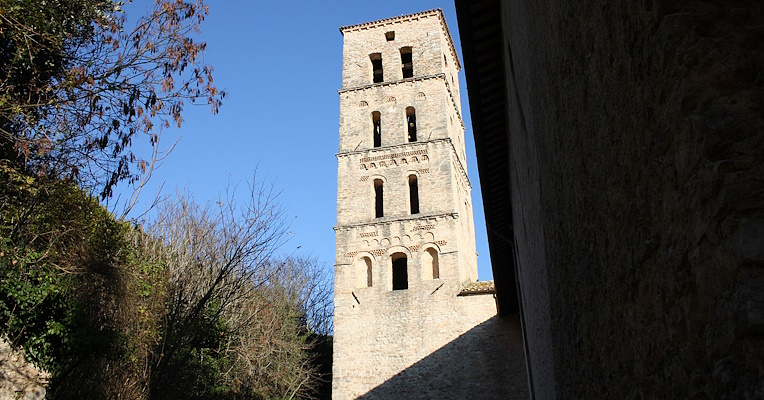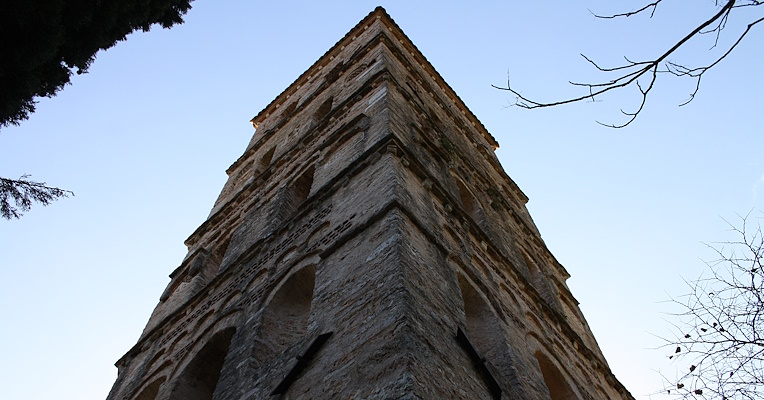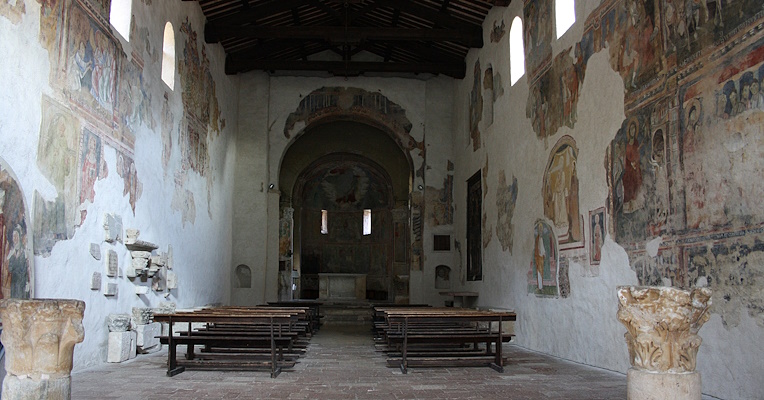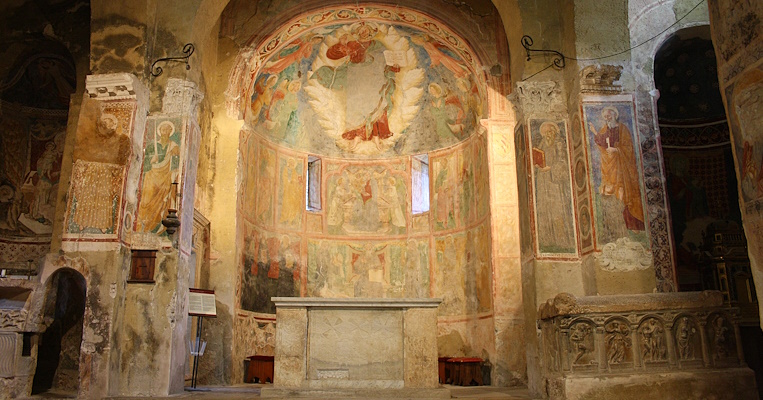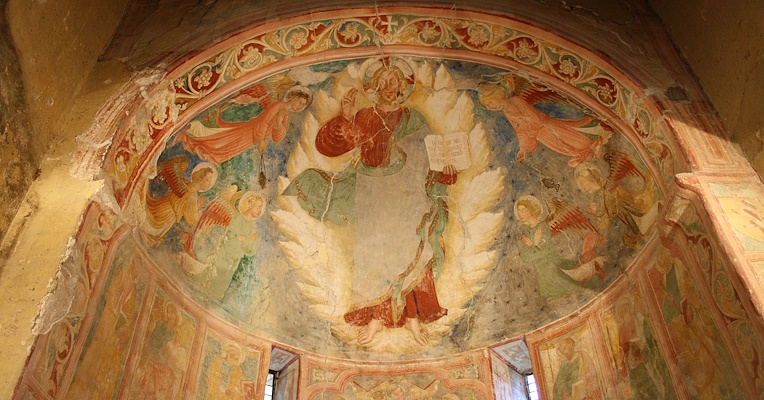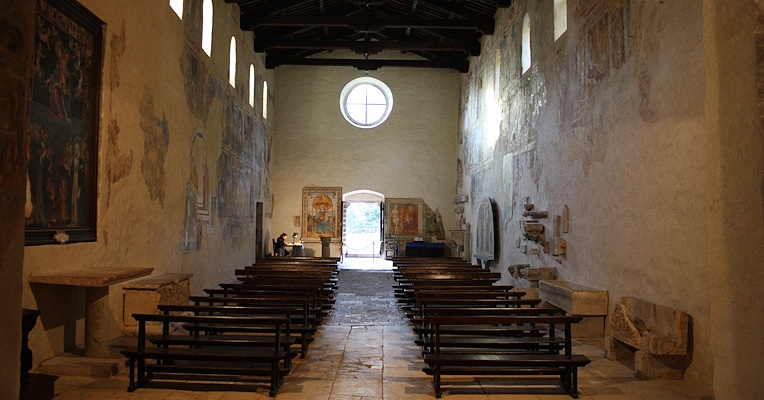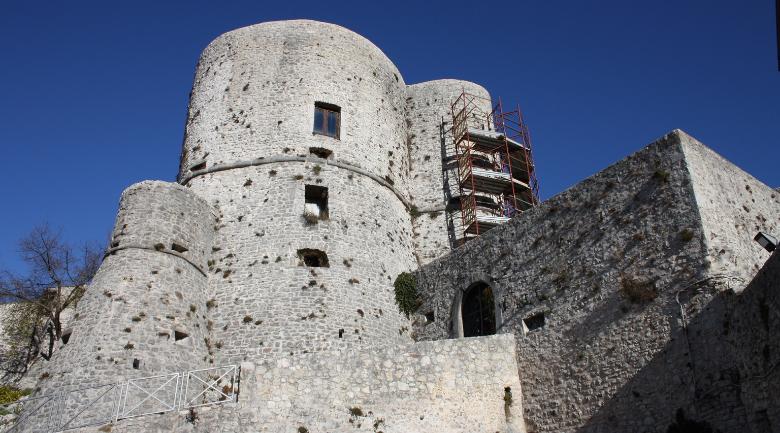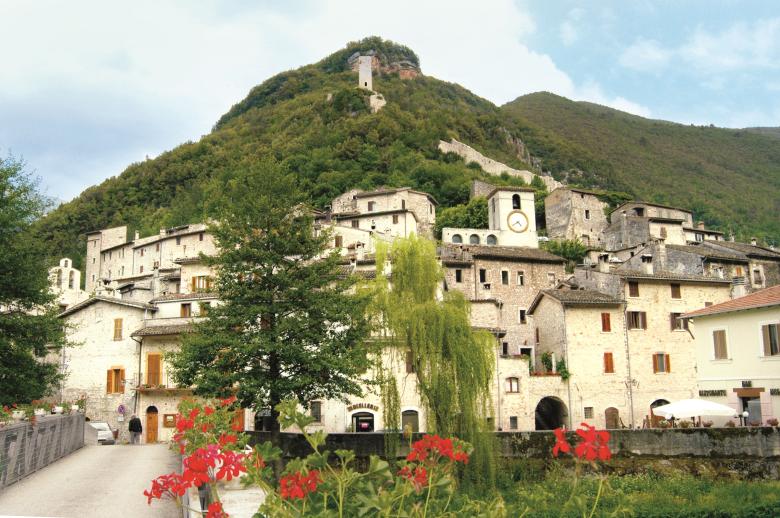With the rebuilding of the adjacent monastery, the abbey increased its possessions and influence over the surrounding territory until 1303. In 1477, Sixtus IV granted the abbey in commendam, and in 1517 it became the property of Francesco Cybo, before passing to the municipality of Ferentillo after the Unification of Italy.
In the 15th century, the cloister was added, and in the early 16th century, the current gabled façade was built, very simple, with a Renaissance portal topped by a rose window.
The church, with a Latin cross plan, has a single nave that narrows towards the slightly raised transept, ending with three apses. These apses and the transept date back to the original 8th-century layout. The marble slab of the altar comes from the ancient presbytery enclosure. Inside the church are preserved some Lombard fragments and five Roman sarcophagi with pagan subjects, except for one of Asiatic type, which, according to tradition, housed the remains of Duke Faroaldo II.
In the upper part of the side walls and the triumphal arch, you will find an important cycle of 12th-century frescoes with stories from the Old and New Testaments, considered among the most important in Romanesque painting in Italy for the number of scenes and their state of preservation, representing one of the first reactions to the “hieratic” style of Byzantine painting. The remaining walls and the three apses are decorated with 15th and 16th-century frescoes.
The main altar, located in the center of the presbytery and made with marble fragments dating back to the 8th century, has the slab of the antependium inscribed with Ursus Magister, the first example of a sculpture signed by its author.
The quadrangular bell tower rises for five stories marked by brick cornices. The walls contain numerous stone fragments from the Roman era.
A portal from the second half of the 11th century leads into the cloister, with a rectangular plan and a double loggia with the lower arches dating back to the 12th century, while the upper ones are later additions. In the courtyard, there is a circular marble altar, probably of Greek origin, with bas-reliefs of satyrs and maenads.
The remaining buildings that constitute the abbey complex, also probably from the 12th-13th century, are gathered around the cloister.
























